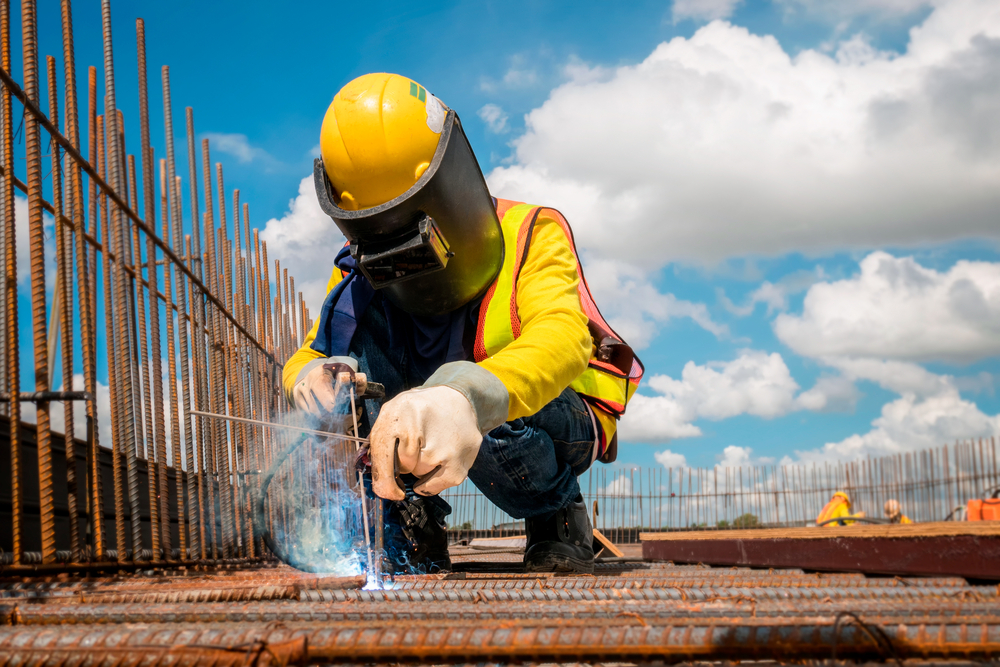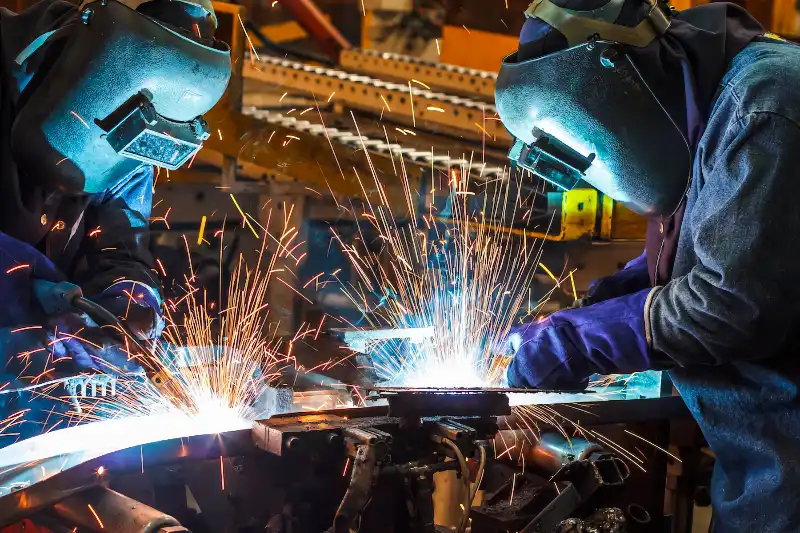Common Welding Repair Service Issues and How to Address Them Effectively
Welding fixings often run into a series of issues that can endanger the stability of the end product. Typical problems consist of poor penetration, porosity, and imbalance, amongst others. Each defect offers unique challenges that need details strategies for resolution. Understanding these issues is vital for welders intending to boost their abilities and end results. This conversation will check out these usual welding fixing problems and reliable techniques to resolve them.
Insufficient Infiltration
Inadequate penetration takes place when the weld metal falls short to completely fuse with the base material, resulting in weak joints and potential architectural failings. This concern often comes from not enough warmth input, wrong electrode angle, or incorrect welding rate. Welders might run into poor penetration because of a mistake of the needed specifications for a details product density or type. Additionally, contamination on the base material's surface can hinder reliable bonding, aggravating the problem. To resolve insufficient penetration, welders ought to ensure appropriate setups on their equipment and maintain a tidy work surface. Routine inspection of welds is suggested to determine any shortages early, permitting timely modifications and the avoidance of endangered architectural integrity in bonded settings up.
Porosity
Porosity is a typical defect in welded joints that shows up as small gas bubbles caught within the weld metal. This flaw can endanger the honesty of the weld, resulting in reduced stamina and possible failing under tension. Montana Mobile Welding and Repair Welding. Porosity commonly arises from contamination, wetness, or inappropriate welding methods, which allow gases to escape right into the liquified weld swimming pool. To deal with porosity, welders ought to ensure proper surface preparation, preserve a tidy functioning atmosphere, and use suitable welding parameters. Furthermore, picking the appropriate filler material and protecting gas can minimize gas entrapment. Routine examination and screening of welds can help recognize porosity early, assuring prompt rehabilitative actions are taken, thus maintaining the top quality and dependability of the welded structure
Misalignment
Imbalance in welding can emerge from numerous elements, consisting of improper arrangement and thermal expansion. Recognizing the origin is necessary for reliable resolution. A number of improvement techniques are readily available to straighten parts and assure architectural stability.
Reasons for Imbalance
Welding misalignment frequently originates from a range of underlying problems that can compromise structural integrity. One main reason is improper fit-up of elements prior to welding, which can cause gaps and irregular surface areas. Variations in thermal growth throughout the welding process can likewise cause distortion, especially if the materials being joined have various coefficients of growth. In addition, insufficient securing and fixturing may fall short to hold elements safely in position, leading to activity during welding. Inadequately conserved equipment, consisting of welding equipments and devices, may introduce disparities in the weld bead, further contributing to imbalance. Finally, operator mistake, originating from not enough training or experience, can additionally play a considerable function in producing misaligned welds.
Modification Techniques Readily Available
Addressing imbalance efficiently calls for a mix of corrective techniques tailored to the specific concerns at hand. One usual approach is the usage of components or jigs to hold elements in the appropriate placement throughout welding, guaranteeing regular placement. Furthermore, pre-heating the products can aid lower distortion and enhance fit-up. For substantial imbalance, mechanical adjustment strategies, such as using hydraulic jacks or clamps, can be used to remedy the placement before welding. Post-weld warmth therapy might likewise be essential to soothe stresses triggered by imbalance. Mindful evaluation and modification during the configuration stage can stop misalignment issues from ending up being considerable problems, advertising a smoother welding process and boosting overall structural integrity.
Distortion
Distortion is a typical difficulty in welding that can develop from numerous aspects, including irregular heating & cooling. Understanding the reasons of distortion is important for applying effective prevention methods. Addressing this problem not only improves structural stability yet also boosts the general high quality of the weld.
Sources of Distortion
When subjected to the intense warm of welding, materials usually undergo changes that can lead to distortion. This sensation mainly arises from thermal growth and contraction during the welding process. As the weld location warms up, the material broadens; upon air conditioning, it gets, which can produce inner tensions. Furthermore, unequal home heating throughout a work surface can worsen these stresses, resulting in warping or bending. The kind of material additionally plays a considerable duty; steels with varying thermal conductivity and coefficients of expansion may respond in a different way, resulting in unforeseeable distortions. Bad joint layout and poor fixturing can add to imbalance during welding, enhancing the likelihood of distortion. Understanding these causes is essential for reliable welding repair service and avoidance strategies.
Prevention Techniques
Reliable avoidance techniques for distortion during welding emphasis on managing warm input and guaranteeing appropriate joint style. welding thin metal Preserving a regular warmth input aids to lessen thermal growth and contraction, which can lead to distortion. Using techniques such as preheating the work surface can also decrease the temperature gradient, promoting uniform home heating. In addition, picking proper joint layouts, such as T-joints or lap joints, can improve security and decrease stress and anxiety concentrations. Carrying out appropriate fixturing to protect the workpieces in position better aids in maintaining placement during the welding procedure. Staggered welding sequences can distribute warmth more equally, avoiding localized distortion. By applying these approaches, welders can substantially decrease the likelihood of distortion and boost the general top quality of their welds.
Cracking
Cracking is a typical concern encountered in welding repair services, frequently resulting from various aspects such as inappropriate cooling prices, product choice, or poor joint preparation. The event of fractures can substantially jeopardize the stability of the weld, bring about prospective failings throughout operation. To address this concern, welders should first analyze the origin, guaranteeing that products work and suitably selected for the details application. Additionally, controlling the cooling price throughout the welding procedure is necessary; quick cooling can cause tension and bring about fracturing. Appropriate joint style and prep work likewise add to minimizing the danger. Applying these techniques can improve weld high quality and resilience, eventually reducing the chance of splitting in finished weldments.

Incomplete Blend
A significant issue in welding repair services is incomplete combination, which takes place when the weld metal does not properly bond with the base material or previous weld passes - Montana Mobile Welding and Repair Fabrication. This problem can lead to weak points in the joint, potentially jeopardizing the integrity of the bonded structure. Elements adding to incomplete fusion include not enough warm input, improper welding strategy, and contamination of the surface areas being joined. To resolve this issue efficiently, welders ought to guarantee appropriate pre-weld cleansing and surface area preparation, as well as adjust their welding parameters to accomplish appropriate penetration and blend. Routine inspection during the welding process can also aid recognize incomplete blend early, allowing for prompt restorative measures to boost the total top quality of the weld
Overheating
While welding fixings can boost architectural honesty, overheating presents a significant obstacle that can result in product destruction. Extreme heat throughout welding can change the mechanical buildings of steels, causing decreased strength, enhanced brittleness, and warping. This phenomenon is specifically important in high-stress applications where architectural integrity is critical. Recognizing getting too hot can entail see this here aesthetic inspections for staining or distortion, along with keeping an eye on temperature level during the welding process. To mitigate the threats associated with overheating, welders must utilize appropriate techniques, such as managing warmth input, readjusting traveling rate, and using suitable filler materials. In addition, implementing pre- and post-weld warm treatments can aid restore product buildings and improve the total top quality of the repair work, ensuring long-lasting efficiency and safety and security.
Often Asked Questions
What Are the Usual Signs of a Welding Defect?

How Can I Check My Welds for High quality?
To examine welds for quality, one can use aesthetic evaluations, ultrasonic testing, and radiographic methods. Each technique ensures architectural integrity, determines issues, and confirms adherence to specified requirements, eventually improving the integrity of the bonded joints.
What Safety Preventative Measures Should I Take While Welding?
When welding, one ought to focus on safety by putting on appropriate individual safety tools, guaranteeing appropriate air flow, safeguarding combustible materials away, preserving a tidy work area, and being conscious of environments to stop crashes and injuries.
Can I Repair a Weld Without Redoing the Entire Joint?
Repairing a weld without redesigning the whole joint is possible, relying on the damages (Montana Mobile Welding and Repair Belgrade Welding). Methods such as grinding, adding filler product, or utilizing special info a welding process can properly deal with details problems while maintaining the bordering framework
What Devices Are Important for Efficient Welding Services?
Important devices for reliable welding fixings consist of a welding device, wire brush, mill, safety gear, clamps, and filler products. Each tool plays a crucial function in making sure top quality and safety and security throughout the fixing procedure. Porosity normally emerges from contamination, dampness, or inappropriate welding strategies, which enable gases to leave right into the molten weld pool. Improperly maintained tools, consisting of welding machines and tools, may present incongruities in the weld grain, more adding to imbalance. When subjected to the extreme warm of welding, products frequently undertake adjustments that can lead to distortion. Breaking is a common problem run into in welding repair services, commonly resulting from various factors such as inappropriate cooling rates, material option, or poor joint prep work. A considerable concern in welding repair services is insufficient blend, which happens when the weld steel does not appropriately bond with the base product or previous weld passes.